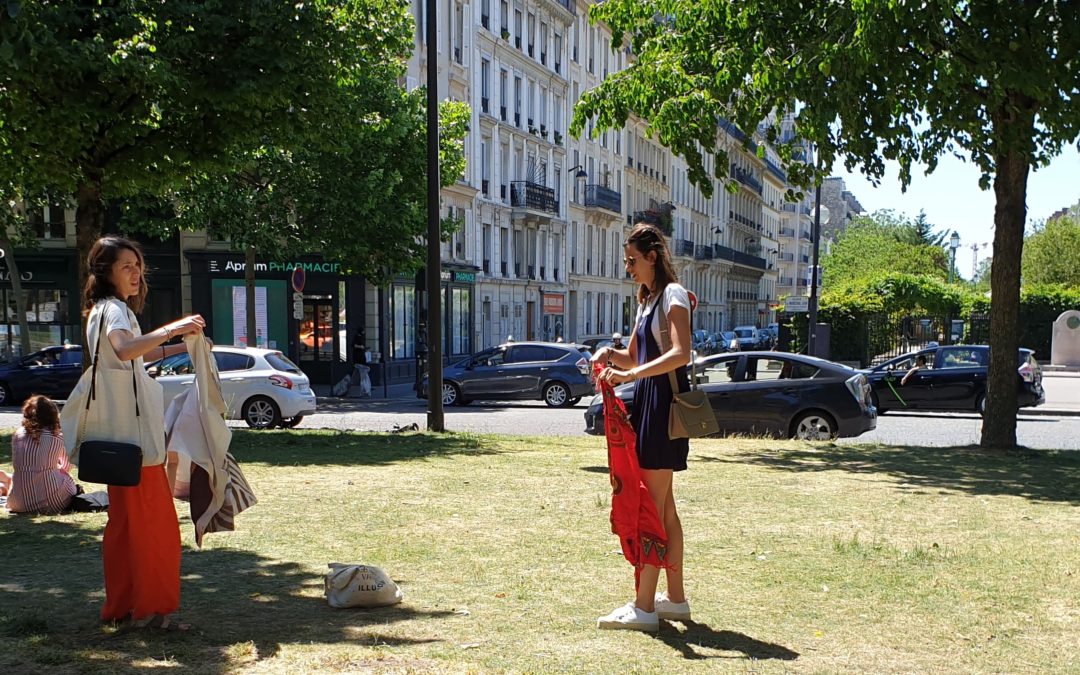By Anne Swardson
When I came to Paris on a school-scouting trip before moving here, the outgoing Washington Post correspondent, a rather large American man, welcomed me with a two-cheek kiss. My reaction was, yuck.
But, like him and like many foreigners who have lived in Paris for some time, I quickly adopted the bise, as it is called. So did my husband and children. When we had people over dinner, French or not, we would all give each other a bise (pronounced BEEZ) on arrival. This took a while for dinner parties of eight. When Louise and Henry came in to say hello to the guests, they would do the same. Ditto when we went to others’ homes.
Louise even converted a president to the habit: George W. Bush, on a European swing in May 2008, was in the congregation of the American Cathedral on the Sunday that Louise, then 18, preached the sermon. At the end of the service, he went to congratulate her and Louise offered him her cheek. He pecked it. She swiveled her head and displayed the other one. After a very long and uncertain second, he obliged.

It’s a very natural gesture: warm and friendly, yet asexual and not often subject to misinterpretation. No wonder the bise is so widely deployed in France, and for so long. (In another example of Frenglish, we transplants always use the French word when speaking in English.) I have gotten so used to it, and the ubiquitous handshake, that when I go to the U.S. I don’t know how to greet people. A hand waggle is the best I can manage.
So no wonder the French are highly concerned that the coronavirus is making them give it up.
Obviously, rubbing cheeks with someone (lips are just there to make that little smacking noise) isn’t consistent with social distancing. Nor with what the French called the gestes barrières, the protective measures needed to reduce contagion. As long ago as early March, Paris Mayor Anne Hildalgo, campaigning for re-election, was saying she’d given up the kiss, though “with regret.” The government also urges people not to shake hands or kiss.

Yet the bise is deeply embedded in French life and politics, at least in modern French politics. President Emmanuel Macron and German Chancellor Angela Merkel famously exchange at least one every time they meet, or they used to.
And Brigitte Macron got President Trump to do one, sort of. (The long-serving Merkel was also willing to bise with Presidents Nicolas Sarkozy and François Hollande, though not often.)
One reason cheek-kissing is so popular, in my opinion, is that it’s complicated. You have to know how many kisses – it varies from one to four across the country – and, worst of all for foreigners, which side to start on. Not to mention whom to kiss and whom to shake hands with. And what do you do with your hands? I sometimes put mine on the shoulder of the bise-ee and no one has objected yet, though I still don’t know if you are supposed to.
Figuring out these codified signals is a cottage industry for natives and a source of endless bafflement for the rest of us. Linguist Mathieu Avanzi has mapped some in a helpful guide.
Will people be willing to socialize sans bise now that parks and restaurants are reopening, offering additional ways to meet friends? And how? L’Express magazine offered a variety of proposals, from elbow bumps to Namaste-style bows.
I didn’t see any of those when I walked through the Parc Monceau during its first day of being open over the weekend. One group did rush in, cheeks outstretched, but remembered in time and backed off.

Others just went for it.

What will the transplant class do? I must say, I haven’t felt odd greeting people with an elbow bump, a self-hug or nothing at all. Maybe adopted habits are easier to shed than those that are the product of centuries of tradition.

A wonderful post, Annie. So cute — and helpful!
I, for one, hope bise-ing survives the pandemic.